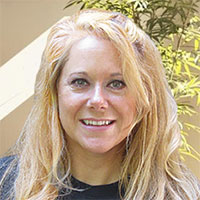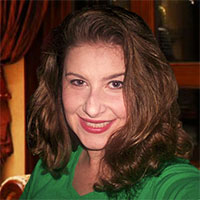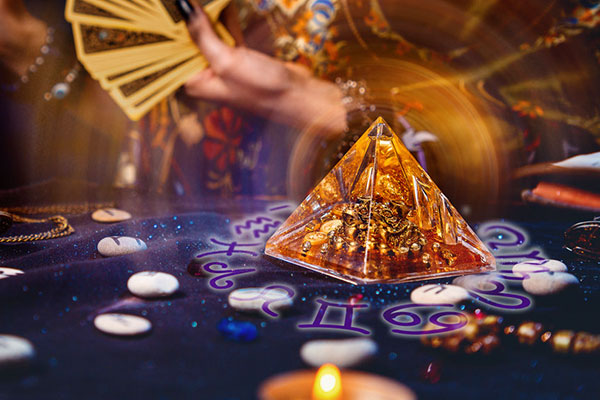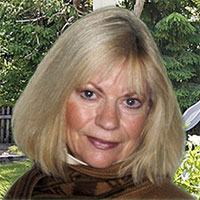 Have you ever sensed a soothing, divine presence in times of fear, sorrow, or loss? You may have been in the company of an archangel.
Have you ever sensed a soothing, divine presence in times of fear, sorrow, or loss? You may have been in the company of an archangel.
These brilliant spiritual allies are not mere folklore or symbolism. They are bright embodiments of divine wisdom, each harboring unique gifts to uplift, illuminate, and heal. As skilled healers and energetic conduits, they provide deep support and empathy to us on our spiritual journeys.
Archangels offer strength in our weakest moments and healing light during our darkest hours. They remind us of our unbreakable connection to the divine and reassure us that we are never truly solitary.
The term angel derives from the Greek aggelos, which means “messenger” and captures their essence: messengers of light, love, and higher wisdom. Archangels enter our lives in ways that are both subtle and significantly transformative.
Unlike spirit guides, who are souls having experienced human lives, such as our forebears or ascended masters, archangels are elevated beings of pure spirit. They have never taken human form. Commonly known as “ministering spirits,” their missions are profoundly linked to divine purpose, providing clarity, healing, and guidance from the highest spiritual realms.
The designation of Archangel is bestowed upon those who have perfected their divine realm and purpose. Their feminine counterparts, referred to as the Archeia, are equally important. You cannot thoroughly d explore the Archangels without recognizing the Archeia. The sacred feminine complements the divine masculine, creating a cosmic unity.
Become acquainted with the angels and frequently behold them in spirit; for though unseen, they are with you ~ St. Francis De Sales
How To Engage With The Archangels
Below is a list of Archangels and their Archeia, highlighting their sacred attributes and energetic traits. Each description emphasizes their divine gifts along with a corresponding number, crystal, candle color, essential oil, chakra, rune, and tarot card. These tools can be utilized individually or collectively to deepen your connection and invite their guidance. A mantra or affirmation is also provided to help align you with their presence and receive their support. Here is how to use each tool:
Number: Employ this as a meditative anchor. You can silently repeat the number during meditation, jot it down in your journal, or display it on your altar. Some opt to set a timer for the number of minutes or chant the number in a vibrational tone.
Stone: Wearing or carrying the corresponding crystal helps align your aura with the archangel’s frequency. You can also position the stone on the relevant chakra during meditation or sleep with it under your pillow for dream connection.
Candle Color: Lighting a candle in the archangel’s color creates a vibrational signal for their presence. Use this during prayer, meditation, or intention-setting rituals to enhance the connection and welcome their energy into your space.
Essential Oil: Apply the oil on your wrists, heart center, or third eye before meditation, or diffuse it to elevate the energetic frequency of your environment. Each scent resonates with the archangel’s energetic signature and assists in anchoring their presence.
Chakra: Concentrate on the corresponding chakra during breathwork, visualization, or energy healing. Imagine this chakra opening and emanating the hue of the archangel’s candle light as you call them forth.
Rune: Meditate on the rune symbol as a sacred sigil. You may draw it on paper, visualize it glowing in your awareness, or etch it into a candle or crystal. These ancient symbols act as spiritual keys, unlocking the essence of the archangel’s insights.
Tarot Card: Utilize the related tarot card as a focal point in a reading or meditation. You may draw it prior to a ritual, place it on your altar, or journal about how its message corresponds with the support you are seeking from the archangel.
Mantra or Affirmation: Recite the mantra aloud or silently as a means to invoke the archangel’s presence. Repetition fortifies the vibrational connection between you and the angelic realm. You may also document the affirmation in your journal or integrate it into your prayers.
This multidimensional practice provides a richly textured way to connect with the archangelic realm, incorporating various tools, symbols, and sensory experiences to forge a powerful and personalized link.
ARIEL
Angel of Visions and Psychic Awakening
Ariel lights the pathway of intuition by enhancing our inner vision and aiding in the awakening of latent psychic abilities. She is often solicited during periods when clarity and insight are essential to uncover hidden truths or steer one’s fate toward prosperity and positive change. Renowned for attracting good fortune, Ariel encourages alignment with your highest potentials and supports those who work in harmony with nature, animals, and elemental energies. She assists in amplifying clairvoyance and spiritual awareness, making her an invaluable mentor for individuals on the journey of intuitive growth.
Number: 7
Stone: Green Aventurine
Candle Color: Emerald Green
Essential Oil: Sage or Jasmine
Chakra: Third Eye
Rune: Ansuz
Tarot Card: The High Priestess
Mantra: I call upon Ariel to aid me in awakening my psychic gifts and intuition.
AURORA & URIEL
Archangels of Ministry and Awakening
Aurora and Uriel jointly symbolize the emergence of divine service and the unveiling of higher truth. They guide those prepared to assume roles in leadership, teaching, or spiritual mentorship, notably in service to humanity’s collective evolution. Uriel ignites divine inspiration and intellectual insight, while Aurora nourishes the compassionate essence of the Christ consciousness. Their energy uplifts those drawn to sacred activism, healing communities, and disseminating light through everyday acts of service. When invoked, they elevate the spirit to remember its divine mission and inspire love-driven actions.
Number: 10
Stone: Amethyst
Candle Color: Gold or Soft White
Essential Oil: Frankincense or Sandalwood
Chakra: Crown
Rune: Raidho
Tarot Card: The Hierophant
Mantra: I call upon Aurora to help me connect with the Christ consciousness and awaken the teacher within.
CHAMUEL
Angel of Divine Clarity and Heart Healing
Chamuel translates to “He who sees God,” and his gift is the divine ability to discern truth within all things. He aids in decision-making, emotional healing, and achieving inner peace during turbulent periods. Chamuel assists us in releasing fear-based attachments and brings clarity amidst confusion or emotional pain. He gently guides the heart toward compassion, encouraging us to prioritize love over control. His energy is particularly potent for healing relationships and aligning our decisions with divine wisdom and higher love.
Number: 20
Stone: Hawk’s Eye
Candle Color: Rose Pink
Essential Oil: Rose
Chakra: Heart
Rune: Gebo
Tarot Card: Two of Cups
Mantra: I call on Chamuel to help me detach from outcomes and choose what serves the greater good.
CHARITY
Angel of Forgiveness and Unconditional Love
Charity, the Archeia who partners with Chamuel, radiates the essence of divine compassion. Her presence softens hardened hearts and encourages the gentle opening of emotional wounds in need of healing. Charity’s energy fosters self-love, forgiveness, and the ability to love others without judgment or expectation. She supports the healing of emotional trauma and the transformation of fear into grace. When you seek to return to love following heartbreak, invoke Charity to renew your spirit and help you fully embrace the sacred power of your heart.
Number: 20
Stone: Rose Quartz
Candle Color: Soft Pink or Green
Essential Oil: Geranium or Ylang-Ylang
Chakra: Heart
Rune: Wunjo
Tarot Card: Four of Wands
Mantra: I call upon Charity to open my heart, forgive, and love again.
CHRISTINE & JOPHIEL
Angels of Wisdom and Illumination
Christine and Jophiel function as twin flames on the second ray, guiding us to seek truth, clarity, and enlightenment. Christine offers nurturing intuition and insight, while Jophiel unveils divine beauty and intellectual brilliance. Together, they help illuminate our journey with spiritual knowledge and inspired understanding. They are particularly supportive to educators, learners, and seekers awakening to divine truth. Their energy dispels confusion and alleviates mental doubt, allowing us to embrace our higher wisdom and calling.
Number: 11
Stone: Limonite
Candle Color: Pale Yellow or Light Violet
Essential Oil: Lemon or Lavender
Chakra: Third Eye / Crown
Rune: Eihwaz
Tarot Card: The Star
Mantra: I call upon Christine to aid me in uncovering wisdom and insight within.
FAITH & MICHAEL
Angels of Protection, Willpower, and Divine Strength
Faith and Michael stand as powerful allies in reclaiming inner authority and dispelling fear. Michael, as the great protector, severs energetic ties of illusion and doubt, while Faith instills the courage to act with confidence and trust in divine timing. Together, they anchor the essence of truth and divine justice, empowering you to remain firm on your spiritual journey. Their presence is especially beneficial in times of spiritual conflict, personal transformation, and reclaiming your voice. They assist in awakening the divine will within, restoring strength and sacred alignment.
Number: 22
Stone: Jet
Candle Color: Deep Blue or Indigo
Essential Oil: Cedarwood or Blue Spruce
Chakra: Throat
Rune: Tiwaz
Tarot Card: Justice
Mantra: I call upon Faith to guide me in trusting divine timing and reclaiming my willpower.
GABRIEL
Angel of Divine Messages and Sacred Communication
Gabriel represents the archangel of communication, recognized for delivering divine messages, often through dreams, visions, or subtle intuitive prompts. As the angel of announcement, Gabriel conveys news of transformation, spiritual understanding, and fresh beginnings. He supports writers, speakers, artists, and anyone striving to communicate truth with clarity and heart. His presence empowers you to trust your inner voice and authentically express your spiritual insights. Gabriel’s guidance awakens purpose and aligns your soul with its higher calling.
Number: 13
Stone: Jade
Candle Color: White or Sky Blue
Essential Oil: Chamomile or Eucalyptus
Chakra: Throat
Rune: Ansuz
Tarot Card: Page of Cups
Mantra: I call upon Gabriel to provide the divine messages I need to hear at this moment.
HANIEL
Angel of Joy, Grace, and Emotional Harmony
Haniel embodies the divine attributes of joy, grace, and emotional flow. Her energy gently encourages us to cherish life’s simple pleasures and to find beauty in the present. She aids in balancing emotional states, alleviating mood swings, and offers comfort during emotional transitions or sensitivity. Haniel is also linked to lunar energy, feminine cycles, and creative inspiration. She encourages us to live more soulfully and to appreciate our emotional nature as a sacred gift, returning us to a state of loving presence and harmony.
Number: 5
Stone: Sardonyx
Candle Color: Light Peach or Lavender
Essential Oil: Orange Blossom or Neroli
Chakra: Heart / Sacral
Rune: Laguz
Tarot Card: Three of Cups
Mantra: I call upon Haniel to assist me in slowing down and discovering joy and gratitude in life.
HOLY AMETHYST
Angel of Freedom, Transformation, and Creative Power
Holy Amethyst is the Archeia of the violet flame, dedicated to transmuting limitations and liberating the soul from fear and constraints. She facilitates deep spiritual transformation, creative expression, and the emergence of one’s authentic self. Holy Amethyst clears stagnant energy, shatters old patterns, and awakens higher consciousness, creating room for transformation. Her energy is particularly mighty for artists, visionaries, and those breaking free from karmic cycles. She assists you in embracing spiritual sovereignty and unlocking your soul’s fullest creative capabilities.
Stone: Amethyst
Candle Color: Violet
Essential Oil: Lavender or Violet
Chakra: Crown
Rune: Mannaz
Tarot Card: The Fool
Mantra: I call upon Holy Amethyst to ignite my creative gifts and free me from limitations.
HOPE & GABRIEL
Guardians of Resurrection and Ascension
Hope, along with Gabriel, brings the light of renewal, guiding souls through both spiritual and earthly transitions. She anchors the energies of the resurrection flame, aiding in dispelling despair and infusing the heart with optimism, clarity, and forward momentum. Together, Hope and Gabriel awaken the soul to its eternal essence and support individuals experiencing profound inner transformation or spiritual rebirth. They hold space for faith during uncertain times, empowering you to rise from sorrow and align with divine timing and intention.
Number: 13
Stone: Jade
Candle Color: White with Sky-Blue Accents
Essential Oil: Bergamot or Lotus
Chakra: Solar Plexus / Throat
Rune: Sowilo
Tarot Card: Temperance
Mantra: I call upon Hope and Gabriel to impart divine messages that will guide my growth.
JEREMIEL
Angel of Life Review and Visionary Insight
Jeremiel offers the significant gift of life review—the capacity to reflect on your life with lucidity, wisdom, and compassion. He provides spiritual visions that guide you toward realigning your path, embracing your higher calling, and reconciling with your past. Jeremiel is often invoked during substantial life changes or when seeking a wider perspective on your soul’s journey. He aids in integrating past lessons and preparing for an elevated future aligned with divine purpose.
Number: 25
Stone: Garnet
Candle Color: Indigo or Deep Violet
Essential Oil: Clary Sage or Sandalwood
Chakra: Third Eye / Crown
Rune: Perthro
Tarot Card: Judgement
Mantra: I call upon Jeremiel to unveil my life review now, so I may live as my truest self.
JOPHIEL
Angel of Divine Beauty and Inspired Thought
Jophiel, the “Beauty of God,” aids in illuminating the beauty of life, both inside and around you. He serves as a guide for artists, writers, and seekers of truth, enriching clarity in thought and grace in expression. Jophiel clears mental clutter and aids in shifting negative thought patterns into profound insight. His influence proves particularly beneficial in scenarios requiring elegant thought, refined communication, or the reawakening of joy in daily life. He teaches that beauty is a sacred path to divine knowledge.
Number: 11
Stone: Limonite
Candle Color: Bright Yellow or Light Gold
Essential Oil: Lemon or Bergamot
Chakra: Throat / Solar Plexus
Rune: Kenaz
Tarot Card: Ace of Swords
Mantra: I call upon Jophiel to guide me in expressing love and connecting with divine wisdom.
METATRON
Angel of Sacred Geometry and Spiritual Records
Metatron is a formidable guardian of spiritual knowledge, sacred wisdom, and the Akashic Records. He aids in providing structure to spiritual insights and serves as a bridge between the earthly realm and the divine. Metatron is particularly present when you’re called to organize, write, or document your soul’s truth. He supports highly sensitive individuals, especially children, and guides profound spiritual growth. Metatron translates divine downloads into tangible actions, aligning intuition with inspired purpose.
Number: 50
Stone: Black Calcite
Candle Color: Black or Deep Violet
Essential Oil: Frankincense or Myrrh
Chakra: Crown / Throat
Rune: Othala
Tarot Card: The Magician
Mantra: I call upon Metatron to inspire my writing with truth and creativity.
MICHAEL
Angel of Protection, Courage, and Divine Will
Michael exemplifies the archetype of the spiritual warrior, recognized for defending the innocent and dispelling illusion with the sword of truth. He fortifies the will, restores clarity, and offers substantial protection from fear, negativity, and spiritual deception. Michael assists you in reclaiming your power and advancing in your truth, particularly during spiritual conflicts, energetic cleaning, or leadership duties. His presence is bold, loving, and steadfast—reminding you that you are never alone on your journey toward divine sovereignty.
Number: 22
Stone: Jet
Candle Color: Bright Red or Fiery Orange
Essential Oil: Rosemary or Pine
Chakra: Root
Rune: Tiwaz
Tarot Card: Strength
Mantra: I call upon Michael to bestow strength and clarity beyond illusion.
MOTHER MARY
Archeia of Healing, Grace, and Divine Feminine Wisdom
Mother Mary, the holy incarnation of divine compassion and sacred femininity, governs healing, truth, and nurturing practices. She brings comfort during emotional suffering and holds space for birth, fertility, creative inspiration, and the nurturing of life. Her presence bolsters those engaged in music, mathematics, and healing practices, offering divine insight into the mysteries of creation. Mother Mary helps restore innocence, soften judgment, and connect you with your divine feminine essence and sacred womb wisdom.
Number: 3
Stone: Emerald or Aquamarine
Candle Color: Soft Emerald Green or Pale Blue
Essential Oil: Rose or Jasmine
Chakra: Heart / Throat
Rune: Berkano
Tarot Card: The Empress
Mantras: I call upon Mother Mary to assist with fertility. I call upon Mother Mary to guide me in music, science, or mathematics. I call upon Mother Mary to help me connect with the divine feminine.
RAPHAEL
Angel of Healing, Restoration, and Vibrational Harmony
Raphael, whose name translates to “God is my Health,” is the divine healer among the archangels. He delivers potent healing to the physical body, emotional wounds, and spiritual dis-ease. Raphael collaborates with healers, medical experts, and energy practitioners to foster divine wellness. He aids in balancing the chakras, restoring inner peace, and guiding the body toward natural healing. Raphael’s energy also benefits travelers and those in rehabilitation, providing gentle but powerful restoration and tranquility.
Number: 3
Stone: Watermelon Tourmaline
Candle Color: Emerald Green
Essential Oil: Eucalyptus or Peppermint
Chakra: Heart
Rune: Algiz
Tarot Card: Temperance or Three of Pentacles
Mantra: I call upon Raphael to provide healing support for myself or others.
RAGUEL
Angel of Divine Order, Harmony, and Justice
Raguel serves as the celestial mediator, overseeing fairness, divine justice, and harmonious relationships. He imparts balance to interpersonal disputes, resolves misunderstandings, and upholds spiritual and ethical integrity. Raguel’s energy fosters equilibrium in social dynamics, professional disputes, and legal matters. He empowers you to act honorably and with discernment, aligning with what is fair and divinely orchestrated. When equity or peace is absent, Raguel acts as the soul’s advocate.
Number: 2
Stone: Chalcedony
Candle Color: Light Blue or Teal
Essential Oil: Lavender or Chamomile
Chakra: Throat / Heart
Rune: Sowilo
Tarot Card: Justice or Two of Swords
Mantra: I call upon Raguel to navigate this conflict with fairness and grace.
SANDALPHON
Angel of Birth, Prayer, and Sacred Sound
Sandalphon is the archangel of music, prayer, and the sacred connection uniting Heaven and Earth. He supervises the journey of souls into incarnation and is closely tied to fertility, pregnancy, and childbirth. Sandalphon also facilitates the delivery of your prayers to the divine and often communicates through melody, rhythm, and vibration. He nurtures environments for new life—whether physical, creative, or spiritual—and strengthens the bond between parents and unborn children.
Number: 4
Stone: Pink Agate
Candle Color: Pink or Soft Peach
Essential Oil: Rose or Ylang-Ylang
Chakra: Root / Sacral
Rune: Ingwaz
Tarot Card: The Empress or Ace of Cups
Mantra: I call upon Sandalphon to assist with conception and nurture communication with my unborn child.
ZADKIEL
Angel of Mercy, Transmutation, and Spiritual Freedom
Zadkiel radiates the violet flame of transformation, aiding in dissolving lower frequencies, releasing judgment, and awakening divine mercy. He supports the practice of forgiveness—of self and others—and helps transmute painful experiences into wisdom and compassion. Zadkiel’s energy is particularly potent for those seeking emotional release, karmic cleansing, or spiritual freedom. He teaches that liberation originates in the heart, and that true freedom is attainable when we honor our own journey and the free will of others.
Number: 9
Stone: Sunstone
Candle Color: Indigo or Violet
Essential Oil: Violet or Frankincense
Chakra: Third Eye / Heart
Rune: Sowilo
Tarot Card: Six of Swords or The Star
Mantra: I call upon Zadkiel to assist me in achieving freedom, strengthening my resolve, and respecting the choices of others.
|
 About The Author: Satya About The Author: Satya
Satya resides in Northern California and is a natural Clairvoyant, Empath, Conduit, teacher, author, animal lover, healer, Reiki Master, and an advanced yoga instructor. She has provided essential psychic support to Hollywood stars, athletes, and everyone else in-between. A multi-faceted Intuitive, with numerous unique gifts, she can offer you access to the past as well as a pathway to a brighter future. Through her long-distance energy work, she provides healing for both humans and animals! She swiftly identifies karmic connections from past lives that directly influence current circumstances, assisting clients in moving through them efficiently. For accurate solutions to nearly any urgent issue, you can find Satya at PsychicAccess.com.
|
Invoking the Archangels for Their Divine Gifts
The Archangels are remarkable spiritual entities believed to serve as God’s messengers and guardians of humanity. Each Archangel is linked with specific divine gifts and traits that they can impart on those who seek their assistance. By invoking the Archangels, individuals can access their divine energy and gain guidance, protection, healing, and various blessings.
One of the most recognized Archangels is Archangel Michael, often depicted as a warrior angel wielding a sword of light. Michael is renowned for his strength, bravery, and protection. When called upon, Archangel Michael can assist individuals in overcoming fear, negativity, and challenges in their lives. He can also provide direction and support during difficult times, helping individuals find the strength and courage to confront challenges directly.
Another influential Archangel is Archangel Raphael, identified as the healer and the angel of healing. Raphael is associated with physical, emotional, and spiritual healing and can support individuals in overcoming illness, pain, and suffering. By invoking Archangel Raphael, individuals can access healing energy and guidance on their journey towards wellness and wholeness.
Archangel Gabriel serves as the messenger angel, linked with communication, creativity, and inspiration. Gabriel assists individuals in finding their voice, expressing themselves authentically, and tapping into their creative potential. By invoking Archangel Gabriel, individuals can gain insights and support in their creative projects, as well as assistance in communicating effectively with others.
Archangel Uriel embodies wisdom and enlightenment, aiding individuals in gaining clarity, insight, and understanding. Uriel can assist with wise decision-making, problem-solving, and seeing the bigger picture. By invoking Archangel Uriel, individuals can receive guidance and wisdom to navigate through life’s challenges and make informed choices.
To invoke the Archangels, individuals can simply reach out to them in prayer or meditation, asking for their assistance and guidance. It’s vital to approach the Archangels with respect and humility and to remain open to receiving their divine gifts and blessings. By fostering a connection with the Archangels and inviting them into one’s life, individuals can experience their powerful presence and receive the support and guidance needed to overcome life’s challenges and realize their highest potential.
In summary, invoking the Archangels for their divine gifts can be a potent and transformative practice that helps individuals obtain guidance, protection, healing, and various blessings. By establishing a connection with the Archangels and welcoming them into one’s life, individuals can access their divine energy and receive the guidance and support necessary to navigate life’s challenges and fulfill their highest purposes. Continue reading →

















